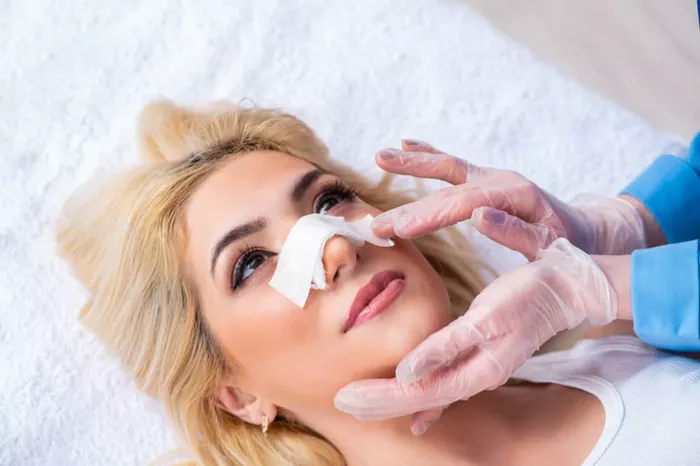Rhinoplasty, commonly known as a nose job, is a surgical procedure aimed at altering the shape, size, or structure of the nose for cosmetic or functional reasons. While rhinoplasty can yield remarkable results, swelling is an inevitable part of the recovery process. Swelling can be uncomfortable and may hinder the immediate appreciation of the surgical outcome. However, with proper care and adherence to post-operative instructions, swelling can be effectively managed, allowing patients to enjoy the full benefits of their rhinoplasty sooner. In this comprehensive guide, we explore various techniques and strategies for reducing swelling after rhinoplasty.
Understanding Swelling: The Body’s Natural Response
Swelling, also known as edema, is the body’s natural response to trauma or injury, including surgical trauma. During rhinoplasty, the delicate tissues of the nose are manipulated and modified, leading to localized inflammation and fluid retention. This inflammatory response is a crucial part of the healing process, as it facilitates tissue repair and regeneration. However, excessive swelling can prolong the recovery period and delay the achievement of optimal results.
Immediate Post-Operative Care
The initial days following Rhinoplasty are critical for swelling management. Patients should follow their surgeon’s post-operative instructions diligently to minimize swelling and promote healing. Here are some essential tips for immediate post-operative care:
Elevation: Keeping the head elevated above the heart can help reduce swelling by promoting lymphatic drainage and minimizing fluid accumulation. Patients should sleep with their head elevated using multiple pillows or a recliner chair during the first few weeks after surgery.
Cold Compresses: Applying cold compresses to the nose can constrict blood vessels and reduce inflammation. Patients can use gel packs or bags of frozen peas wrapped in a clean cloth for gentle cooling. It’s essential to avoid direct contact between the cold compress and the skin to prevent frostbite or skin damage.
Stay Hydrated: Proper hydration is crucial for facilitating the body’s natural healing processes, including reducing swelling. Patients should drink plenty of water to stay hydrated and promote circulation.
Avoid Salt and Alcohol: Salt and alcohol can contribute to fluid retention and exacerbate swelling. Patients should limit their intake of salty foods and alcoholic beverages during the recovery period.
Follow Medication Guidelines: Patients should take prescribed medications, such as pain relievers and antibiotics, as directed by their surgeon. These medications can help manage discomfort and reduce the risk of infection, both of which can contribute to swelling.
See also: How long for bones to heal after rhinoplasty?
Long-Term Strategies for Swelling Reduction
While immediate post-operative care is essential for minimizing swelling, long-term strategies can further enhance the recovery process and promote optimal results. Here are some effective techniques for reducing swelling in the weeks and months following rhinoplasty:
Gentle Massage: Gentle massage techniques can help stimulate lymphatic drainage and reduce swelling. Patients should consult their surgeon for specific instructions on when and how to perform nasal massage safely.
Arnica Montana: Arnica Montana is a homeopathic remedy believed to reduce bruising and swelling. Some patients find relief by taking Arnica supplements or applying Arnica gel to the nose as directed by their surgeon.
Healthy Diet: A balanced diet rich in fruits, vegetables, lean proteins, and whole grains can support the body’s healing process and reduce inflammation. Foods high in antioxidants, such as berries, spinach, and nuts, can be particularly beneficial for reducing swelling.
Avoiding Strenuous Activities: Engaging in strenuous activities or exercise can increase blood flow to the nose and exacerbate swelling. Patients should avoid activities that involve bending over, lifting heavy objects, or intense physical exertion during the initial stages of recovery.
Nasal Sprays: Saline nasal sprays can help keep the nasal passages moisturized and clear of debris, promoting airflow and reducing congestion. Patients should use saline nasal sprays as directed by their surgeon to alleviate nasal dryness and swelling.
When to Seek Medical Attention
While swelling is a normal part of the rhinoplasty recovery process, certain symptoms may indicate complications that require medical attention. Patients should contact their surgeon if they experience any of the following:
1.Excessive or worsening swelling that does not improve with conservative measures
2.Severe pain or discomfort that is not relieved by prescribed medications
3.Signs of infection, such as fever, increasing redness, or pus drainage from the incision sites
4.Persistent bleeding or nasal congestion that affects breathing
5.Any other concerns or unusual symptoms that arise during the recovery period
Conclusion
Swelling is an expected part of the rhinoplasty recovery process, but with proper care and attention, it can be effectively managed. By following the tips and techniques outlined in this guide, patients can minimize swelling, promote healing, and achieve optimal results from their rhinoplasty surgery. Remember to consult with your surgeon for personalized advice and guidance throughout the recovery journey. With patience and adherence to post-operative instructions, a smoother and more comfortable recovery experience can be achieved, leading to the desired aesthetic outcomes of rhinoplasty.
Related topics:
How to know If you have scar tissue after rhinoplasty?
Is getting a rhinoplasty worth it?
How Long Should You Wear Rhinoplasty Gel?


